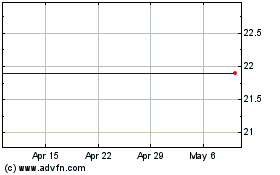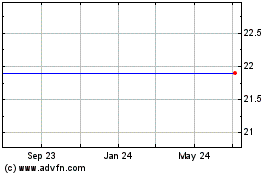UNITED STATES
SECURITIES AND EXCHANGE COMMISSION
Washington, D.C. 20549
FORM SD
Specialized Disclosure Report
Commission file number 001-33365
|
|
|
|
USA Technologies, Inc. |
|
| (Exact name of registrant as specified in its charter) |
|
Pennsylvania |
|
|
|
23-2679963 |
|
| (State or other jurisdiction of incorporation or organization) |
|
(I.R.S. Employer Identification No.) |
|
100 Deerfield Lane, Suite 140, Malvern, Pennsylvania |
|
|
|
19355 |
|
| (Address of principal executive offices) |
|
(Zip Code) |
|
(610) 989-0340 |
|
| (Name and telephone number, including area code, of the person to contact in connection with this report.) |
Check the appropriate box to indicate
the rule pursuant to which this form is being filed, and provide the period to which the information in this form applies:
| ý |
Rule 13p-1 under the Securities Exchange Act (17 CFR 240.13p-1) for the reporting period from January 1 to December 31, 2014. |
INFORMATION TO BE INCLUDED IN THE REPORT
Section 1 – Conflict Minerals Disclosure
Items 1.01 Conflict Minerals Disclosure and Report
Conflict Minerals Disclosure
This Form SD of USA Technologies, Inc.
(the “Company”) is filed pursuant to Rule 13p-1 (the “Rule”) promulgated under the Securities Exchange
Act of 1934, as amended, for the reporting period from January 1, 2014 to December 31, 2014.
A copy of USA Technologies, Inc.’s Conflict Minerals Report is provided as Exhibit 1.01 hereto and is
publicly available through our website: www.usatech.com (under the “Investor Relations” caption and “Financial
Information—SEC Filings” subcaption).
Item 1.02 Exhibits
The Company has filed, as an exhibit to this Form SD, the
Conflict Minerals Report required by Item 1.01.
Section 2.01—Exhibits
The following exhibit is filed as part of this report
| 1.01--Conflict Minerals Report |
|
SIGNATURES
Pursuant to the requirements of the
Securities Exchange Act of 1934, the registrant has duly caused this report to be signed on its behalf by the duly authorized undersigned.
USA Technologies, Inc.
| |
|
|
|
|
|
|
| By |
|
/s/ Stephen P. Herbert |
|
|
|
May 29,
2015 |
|
|
Stephen P. Herbert
Chief Executive Officer |
|
|
|
|
EXHIBIT INDEX
USA Technologies, Inc.
Form SD
| |
|
|
|
Exhibit
No. |
|
Description |
| |
|
| 1.01 |
|
Conflict Minerals Report |
Exhibit 1.01
USA Technologies, Inc.
Conflict Minerals Report
For The Calendar Year Ended December 31,
2014
This Conflict Minerals Report of USA
Technologies, Inc. (this “Report”) has been prepared for the calendar year ended December 31, 2014 pursuant to
Rule 13p-1 and Form SD (the “Rule”) under the Securities Exchange Act of 1934, as amended. The Rule was adopted by
the Securities and Exchange Commission (the “SEC”) to implement reporting and disclosure requirements related to conflict
minerals as directed by the Dodd-Frank Wall Street Reform and Consumer Protection Act of 2010 (the “Dodd-Frank Act”).
The Rule imposes certain reporting obligations on SEC registrants who manufacture or contract to manufacture products containing
conflict minerals which are necessary to the functionality or production of their products. Conflict Minerals include tantalum,
tin, tungsten and gold for the purposes of this assessment. The “Covered Countries” for the purposes of the Rule
are the Democratic Republic of the Congo, the Republic of the Congo, the Central African Republic, South Sudan, Uganda, Rwanda,
Burundi, Tanzania, Zambia and Angola.
This Report has been prepared by management
of USA Technologies, Inc. (“USAT,” the “Company,” “we,” “us,” or “our”)
and is not audited as the Rule provides that if a registrant’s products are “DRC conflict undeterminable” for
the reporting period of 2014 this Report is not subject to an independent private sector audit.
All statements, other than statements
of historical fact included in this Report, are forward-looking statements. Such forward-looking statements are based on the beliefs
of USAT's management, as well as assumptions made by and information currently available to USAT's management. Actual results could
differ materially from those contemplated by the forward-looking statements as a result of certain factors, including but not limited
to: the implementation of satisfactory traceability and other compliance measures by our direct and indirect suppliers on a timely
basis or at all; changes in or developments related to our products or our supply chain; and political and regulatory developments,
whether in the Democratic Republic of the Congo ("DRC") region, the United States or elsewhere. You are cautioned not
to place undue reliance on these forward-looking statements, which speak only as of the date of filing of this Report. We do not
intend, and undertake no obligation, to publish revised forward-looking statements to reflect events or circumstances after the
date of filing of this Report or to reflect the occurrence of unanticipated events.
| 1. |
Products and Locations |
ePort® is the Company’s core device,
which is currently being utilized in self-service, unattended markets such as vending, amusement and arcade, car wash, and various
other kiosk applications. Our ePort® product facilitates cashless payments by capturing payment information and transmitting
it to our network for authorization with the payment system (e.g., credit card processors). Additional capabilities of our ePort®
consist of control/access management by authorized users, collection of audit information (e.g., date and time of sale and sales
amount), diagnostic information of the host equipment, and transmission of this data back to our network for web-based reporting,
or to a compatible remote management system. Our ePort products are available in several distinctive modular configurations, and
as hardware, software or as an API Web service, offering our customers flexibility to install a POS solution that best fits their
needs and customer demands.
Our Company also offers energy conservation
products (“Energy Misers”®) that reduce the electrical power consumption of various types of existing equipment,
such as vending machines, glass front coolers and other “always-on” appliances by allowing the equipment to selectively
operate in a power saving mode when the full power mode is not necessary. Each of the Company’s Energy Miser® products
utilizes occupancy sensing technology to determine when the surrounding area is vacant or occupied. The Energy Miser® then
utilizes occupancy data, product temperatures, and an energy saving algorithm to selectively control certain high-energy components
(e.g., compressor and fan) to realize electrical power savings over the long-term use of the equipment. Customers of our VendingMiser®
product benefit from reduced energy consumption costs, depending on regional energy costs, machine type, and utilization of the
machine. Our Energy Misers® also reduce the overall stress loads on the equipment, helping to reduce associated maintenance
costs. Energy Miser products are not currently networked to our ePort Connect service.
The facilities and countries of origin of Conflict
Minerals used in the production of our products are undeterminable. Efforts to determine location are described in our Due Diligence
Process below.
2. Due Diligence Process
The Company has conducted a good faith reasonable
country of origin inquiry regarding the Conflict Minerals contained in the Covered Products. This good faith reasonable country
of origin inquiry was designed to reasonably determine whether any of the Conflict Minerals originated in the Covered Countries
and whether any of the Conflict Minerals contained in the Covered Products may be from recycled or scrap sources.
The Company’s supply chain is complex,
and there are many third parties in the supply chain between the ultimate manufacture of the Covered Products and the original
sources of Conflict Minerals. The Company does not purchase Conflict Minerals directly from mines, smelters or refiners. The Company
must therefore rely on its suppliers to provide information regarding the origin of Conflict Minerals that are included in the
Covered Products. Moreover, the Company believes that the smelters and refiners of the Conflict Minerals are best situated to identify
the sources of Conflict Minerals, and therefore has taken steps to identify the applicable smelters and refiners of Conflict Minerals
in the Company’s supply chain.
The objective of the due diligence was to determine
the source and chain of custody of the Conflict Minerals contained in the Covered Products and to determine whether any of those
Conflict Minerals are associated with armed groups in the Covered Countries. For the Covered Products manufactured during the calendar
year ended December 31, 2014, the Company performed its due diligence between February 2015 and May 2015.
The suppliers of materials used to manufacture
the Company’s products were identified and contacted directly by a Company employee if Conflict Minerals were present and
critical to the functionality of those materials provided to the Company.
The Company expects to take the following steps,
among others, to continue to improve its due diligence measures and to further mitigate the risk that the necessary Conflict Minerals
contained in the Company’s products finance or benefit armed groups in the Covered Countries: continuing to engage with suppliers
to obtain current, accurate and complete information about the supply chain; encourage suppliers to implement responsible sourcing
and to have them encourage smelters and refiners to obtain a “conflict-free” designation from an independent, third-party
auditor; and engaging in industry initiatives encouraging “conflict-free” supply chains.
After exercising the due diligence described
above, the Company was unable to determine whether its products qualify as “DRC conflict free,” as defined under the
Rule. Accordingly, the Company has reasonably determined that each of the products is “DRC conflict undeterminable,”
as defined in the Rule.
The Company expects to take the following
steps, among others, to continue its due diligence measures and to further mitigate the risk that the conflict minerals contained
in the Company’s products finance or benefit armed groups in the Covered Countries.
| a. |
Include a conflict minerals clause in new or renewed supplier contracts. |
| b. |
Engage with suppliers and direct them to training resources to attempt to increase the response rate and improve the content of the supplier survey responses. |
| c. |
Work to further mature the Company’s conflict minerals program and build transparency over its supply chain in accordance with the OECD Guidance. |
| e. |
Create a process to receive external inquiries and grievances from customers, employees or other interested parties. |
USA Technologies (NASDAQ:USATP)
Historical Stock Chart
From Mar 2024 to Apr 2024

USA Technologies (NASDAQ:USATP)
Historical Stock Chart
From Apr 2023 to Apr 2024
